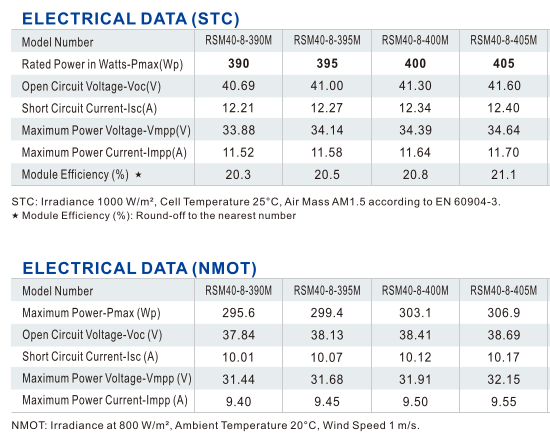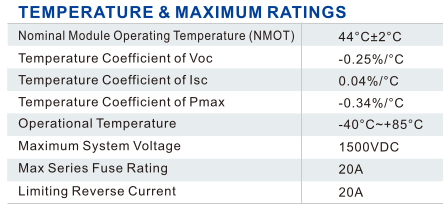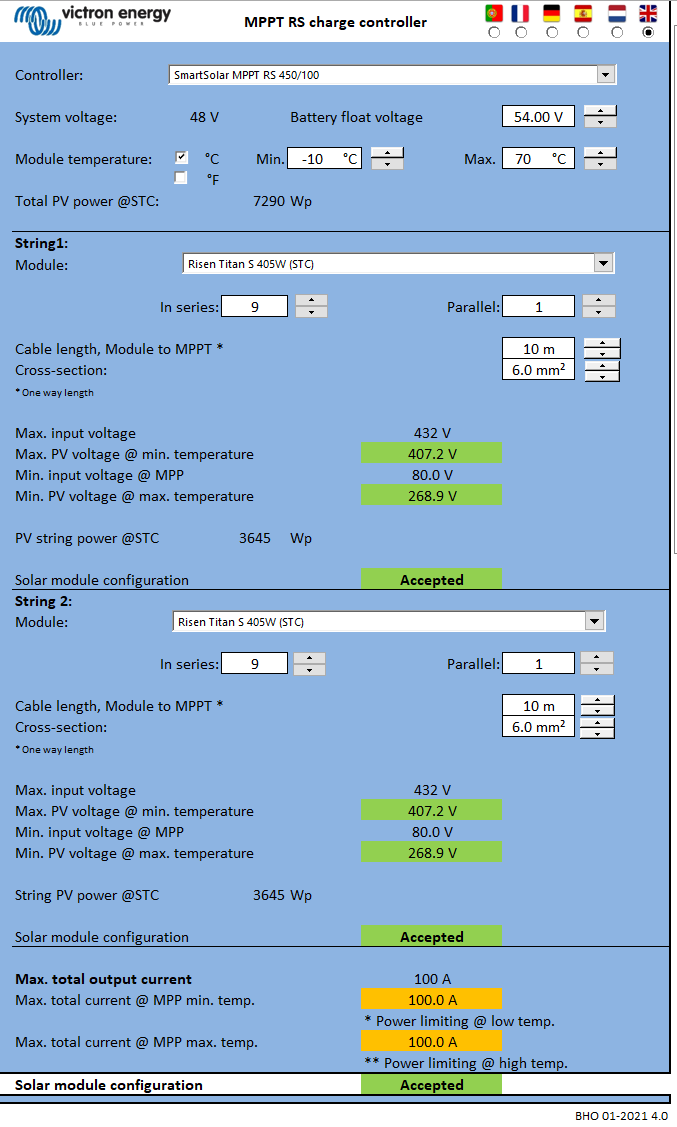I am sizing a PV array using 405W panels, with some on a 20 degree roof and some mounted vertically on a south facing wall, to maximise winter generation.
Using a SmartSolar MPPT RS 450/100 the maximum string length allowed by the Excel Sizing Tool at 9 panels using STC data, charge limited to 100A.
This shows the max input voltage at minimum temperature as 407.2V (below max of 432V).
If I use NMOT values the sizing tool allows 10 panels with max input as 420.8V.
I plan to use 9 panels to a string on the roof.
Would it be safe to use 10 panels to a string for the vertical panels? I assume they will never reach the generation peak of the 20 degree roof panels?
The online utility does not allow over 8 panels in a string, perhaps due to the charge limiting?


Any guidance appreciated,
Jamie


